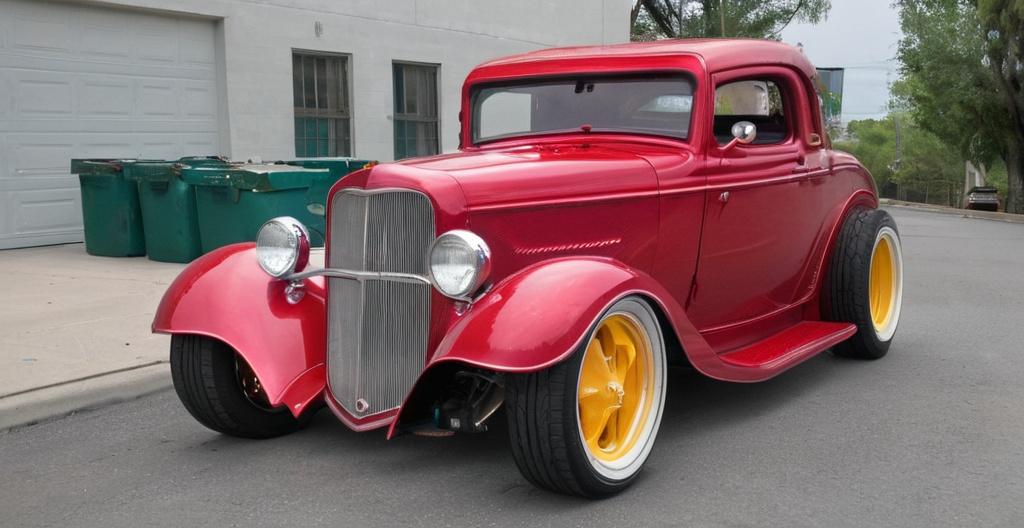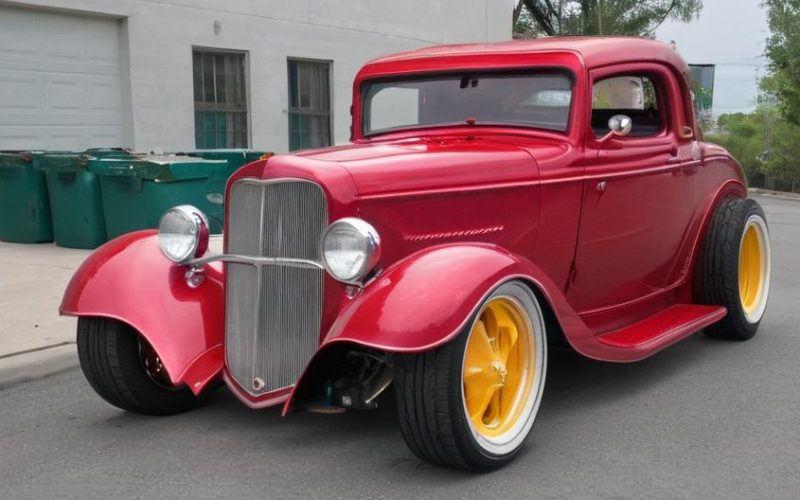Key Take Aways About Frame Boxing and Reinforcement
- Frame boxing strengthens a classic car’s chassis by welding plates along open frame sides.
- Reinforcement is crucial as original frames can’t handle modern horsepower expectations.
- Methods include boxing, adding cross members, and using roll cages for rigidity.
- Real-life examples: Mike’s ’32 Ford Coupe and Tom’s Mustang benefited from reinforced frames.
- Consider trade-offs: added weight and impact on originality could affect performance and value.
- Reinforcement ensures performance and safety for classic-to-modern street rod conversions.

Frame Boxing and Reinforcement in Street Rodding
Street rodding, a universe where classic cars meet modern technology and craftsmanship, often requires some technical tweaks to transform vintage beauties into high-powered machines. Among these tweaks, frame boxing and reinforcement play a pivotal role. Not the kind of boxing involving gloves and a ring, mind you, but more like giving your car a set of rock-hard abs.
What is Frame Boxing?
Frame boxing involves strengthening the chassis of a classic car. The frame, typically made from C-shaped rails, is enclosed by welding plates along its open sides. Think of it as giving your ride a robust backbone. This process stops the frame from flexing or twisting when you stomp on the gas pedal or take a sharp corner. It’s a bit like a skeleton reinforced with some extra bones, making sure it can handle the beefed-up engine and new suspension you’d slap under the hood.
Why Reinforce the Frame?
A classic car’s original chassis wasn’t exactly designed to handle today’s horsepower expectations. Back in the day, these cars were meant for leisurely cruising, not racing down Main Street with a growl that’d wake the neighborhood. Reinforcement helps manage the stress and strain from increased torque and keeps everything together when you’re putting the pedal to the metal. Without it, that shiny paint job might be the only thing holding your car together.
Methods of Reinforcement
Reinforcement can be done by boxing, adding cross members, or even integrating roll cages. Each car is a unique character, requiring different tricks to keep it on the level. Let’s break this down a bit.
Boxing the Frame
Similar to the way an athlete builds core strength to improve performance, boxing gives the chassis extra rigidity. Welding steel plates along the open sections of the frame, you create a solid, boxed-in structure. This step improves rigidity, ensuring that the chassis doesn’t twist like a licorice stick under pressure. Don’t expect your car to start doing crunches, but do expect more stability during those souped-up sprints.
Cross Members
Adding cross members is like bracing your car’s skeleton with support beams. These additional connections across the frame further prevent torsion and bending. A few well-placed cross members can turn a noodle-like frame into a solid rock, ensuring your wheels stay in alignment even when you decide to take that corner like a NASCAR driver.
Roll Cages
Roll cages aren’t just for safety during an unexpected tumble; they also serve to rigidify a chassis. While your aim isn’t to flip your car, a roll cage enhances the structural integrity of the frame for those who push the limits a bit more aggressively.
Real-Life Use Cases
When Mike from down the block decided to drop a supercharged V8 into his ’32 Ford Coupe, he quickly realized the car’s original frame was more jelly than steel under the new engine’s power. Frame boxing and some strategically placed cross members turned that Coupe into a street rod that could handle the newfound muscle without groaning under pressure.
Similarly, take Tom, who found his Mustang swerving wildly on curves after an engine swap. Reinforcing his rod’s frame delivered the stability needed to keep his pony car cornering like it’s on rails.
Considerations and Trade-offs
Reinforcing a car’s frame isn’t all sunshine and rainbows. While it adds strength and rigidity, it also increases the car’s weight. A careful balance between power and weight is necessary to maintain performance without losing that flick of speed you’ve worked so diligently to achieve. It’s like trying to bulk up while maintaining your sprint time—not an easy feat but definitely rewarding when done right.
Furthermore, frame modifications can impact the car’s originality and, potentially, its resale value. Enthusiasts love originality like classic movies and soda pops, so weigh your options before wielding that welding torch.
Conclusion
Frame boxing and reinforcement might not be the flashiest modifications one can make to a street rod, but they’re critical for performance, safety, and preserving your vehicle’s integrity. Just like a good foundation is key to a sturdy house, a reinforced frame is paramount for a high-performing classic car. So, before you rev up that engine and take off down the street leaving tire marks, make sure your car’s ready for the ride.
Street rodding might not be everyone’s cup of tea, but for those who relish the sound of a roaring engine and the feel of classic steel under their hands, a reinforced frame makes sure their beloved rides remain more than just a museum piece.
